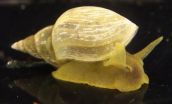(Press-News.org) Biologists have discovered how an outer shield over T-type channels change the electrochemical signaling of heart and brain cells. Understanding how these shields work will help researchers eventually develop a new class of drugs for treating epilepsy, cardiovascular disease and cancer.
The study from the University of Waterloo is published in the Journal of Biological Chemistry today and is featured as the "Paper of the Week" for its significance.
The researchers discovered T-type channels in the pond snail, Lymnaea stagnalis, can shift from using calcium ions to using sodium ions to generate the electrical signal because of an outer shield of amino acids called a turret situated above the channel's entrance.
Low voltage T-type channels generate tiny pulses of current at regular intervals by selectively passing positively charged cations across the cell's membrane through a gate-like channel. The channels are normally extremely selective, allowing just one sodium ion to pass for every 10,000 calcium ions.
The resulting rhythmic signals produced by this transfer of cations are what support the synchronous contraction of our heart muscles and neuronal firing in parts of the brain, like the thalamus, which helps regulate our sleep-wake cycle, or circadian rhythm.
In addition to their published findings, the researchers also found the shield-like turrets in pond snails restrict access of therapeutic drugs to the channel.
T-type channels in pond snails and other invertebrates are similar to those found in humans. Although pond snails reach only 7 cm in length, its simple neural network and physiology make it a popular model organism with neurobiologists.
Over-active T-type channels are linked to epilepsy, cardiac problems, neuropathic pain, as well as the spreading of several kinds of cancer. Drugs that could quench out-of-control T-type channel activity are unable to bind to the channels themselves.
"We wanted to understand the molecular structures of T-type channels," said Spafford. "How they pass ionic currents to generate electrical activity, and to identify drug binding sites, and the drugs which may block these channels to treat neurological disease or heart complications."
The group is currently investigating how dismantling this extracellular turret will improve drug access and binding in T-type channels.
INFORMATION:
Waterloo Biology graduate students Adriano Senatore, Wendy Guan and Research Associate Adrienne Boone carried out the research under the supervision of Professor David Spafford.
Adriano Senatore recently graduated with his doctorate in 2013. He received the Governor General's Medal for best PhD thesis at the University of Waterloo. Senatore has published more than a dozen research articles with Dr. Spafford for his PhD thesis research.
This work was funded by the Heart and Stroke Foundation of Canada and the NSERC Discovery program.
Biologists discover a key regulator in the pacemakers of our brain and heart
2014-04-25
ELSE PRESS RELEASES FROM THIS DATE:
Study finds almost half of homeless men had traumatic brain injury in their life
2014-04-25
TORONTO, April 25, 2014—Almost half of all homeless men who took part in a study by St. Michael's Hospital had suffered at least one traumatic brain injury in their life and 87 per cent of those injuries occurred before the men lost their homes.
While assaults were a major cause of those traumatic brain injuries, or TBIs, (60 per cent) many were caused by potentially non-violent mechanisms such as sports and recreation (44 per cent) and motor vehicle collisions and falls (42 per cent).
The study, led by Dr. Jane Topolovec-Vranic, a clinical researcher in the hospital's ...
Genome regions once mislabeled 'junk' linked to heart failure
2014-04-25
Large sections of the genome that were once referred to as "junk" DNA have been linked to human heart failure, according to research from Washington University School of Medicine in St. Louis.
So-called junk DNA was long thought to have no important role in heredity or disease because it doesn't code for proteins. But emerging research in recent years has revealed that many of these sections of the genome produce RNA molecules that, despite not being proteins, still have important functions in the body. RNA is a close chemical cousin to DNA.
Molecules now associated ...
'Beneficial inflammation' may promote healing in pulmonary fibrosis
2014-04-25
Inflammation has long been considered an integral part of the biological process that leads to deadly scarring in idiopathic pulmonary fibrosis. New research at National Jewish Health, however, suggests that a little inflammation may also be crucial to the healing and repair processes in the lungs. Elizabeth Redente, PhD, assistant professor of cell biology at National Jewish Health, and her colleagues report in the April 2014 issue of the American Journal of Respiratory Cell and Molecular Biology that the pro-inflammatory cytokine TNF-α can speed recovery of injured ...
Buzz and Bite Highlighted In New Malaria Museum
2014-04-25
Chocolate Moose Media's Buzz and Bite public service announcements (PSA) have had a profound effect combatting the spread of malaria around the world. Now the series will be featured in a new museum in Dublin, Ireland, dedicated to malaria.
Buzz and Bite comprises 30 animated spots of either 30 or 60 seconds that feature two female anopheles (malaria-carrying) mosquitos. Creator and company president Firdaus Kharas uses humour as the two winged characters try to infect every human on the planet. The series teaches about the value of insecticide-treated sleeping nets ...
Revolutionary 'metamaterial' has potential to reshape neurosurgery
2014-04-25
Philadelphia, Pa. (April 25, 2014) – The development of graphene—a highly advanced metamaterial with many unique and varied properties—may lead to exciting new applications in the diagnosis and treatment of neurological diseases, according to a report in the May issue of Neurosurgery, official journal of the Congress of Neurological Surgeons. The journal is published by Lippincott Williams & Wilkins, a part of Wolters Kluwer Health.
Tobias A. Mattei, MD, of Invision Health/Brain & Spine Center – Buffalo, New York and Azeem A. Rehman, BS, of The University of Illinois ...
It's not all wedded bliss: Marital stress linked to depression
2014-04-25
MADISON, Wis. – Marital stress may make people more vulnerable to depression, according to a recent study by University of Wisconsin-Madison researchers and their colleagues.
The long-term study, published in the April 2014 Journal of Psychophysiology, shows that people who experience chronic marital stress are less able to savor positive experiences, a hallmark of depression. They are also more likely to report other depressive symptoms.
The findings are important, says study leader Richard Davidson, UW-Madison William James and Vilas Professor of Psychology and Psychiatry, ...
Fires in the Yucatan Peninsula in April 2014
2014-04-25
April is in the middle of the dry season, which runs from January through May in this region, and naturally coincides with fire season. Farmers often use fire to return nutrients to the soil and to clear the ground of unwanted plants. Fire helps enhance crops and grasses for pasture. Some of the fires in this image may be wildfires, with natural (lightning) or accidental (human) sources. As the dry season progresses, the number of fires tend to grow, as does the blanket of smoke which settles over the land, and although the fire may help the farmers get their lands ready ...
Function found for mysterious heart disease gene
2014-04-25
OTTAWA, April 24, 2014 - A new study from researchers at the University of Ottawa Heart Institute (UOHI), published today in Cell Reports, sheds light on a mysterious gene that likely influences cardiovascular health. After five years, UOHI researchers now know how one genetic variant works and suspect that it contributes to the development of heart disease through processes that promote chronic inflammation and cell division.
Researchers at the Ruddy Canadian Cardiovascular Genetics Centre had initially identified a variant in a gene called SPG7 as a potential contributor ...
Study finds almost half of homeless men had traumatic brain injury in their
2014-04-25
TORONTO, April 25, 2014—Almost half of all homeless men who took part in a study by St. Michael's Hospital had suffered at least one traumatic brain injury in their life and 87 per cent of those injuries occurred before the men lost their homes.
While assaults were a major cause of those traumatic brain injuries, or TBIs, (60 per cent) many were caused by potentially non-violent mechanisms such as sports and recreation (44 per cent) and motor vehicle collisions and falls (42 per cent).
The study, led by Dr. Jane Topolovec-Vranic, a clinical researcher in the hospital's ...
UNC researchers link aging to cellular interactions that occur across generations
2014-04-25
April 24, 2014
CHAPEL HILL, N.C. – The evidence for what causes aging has typically been limited to the study of a single organism's lifespan; our cells divide many times throughout our lives and eventually cause organs and our bodies to age and break down. But new research from the UNC School of Medicine suggests that how we age might depend on cellular interactions that we inherit from ancestors throughout many generations.
By studying the reproductive cells of nematodes – tiny worms found in soil and compost bins – Shawn Ahmed, PhD, an associate professor of genetics, ...




